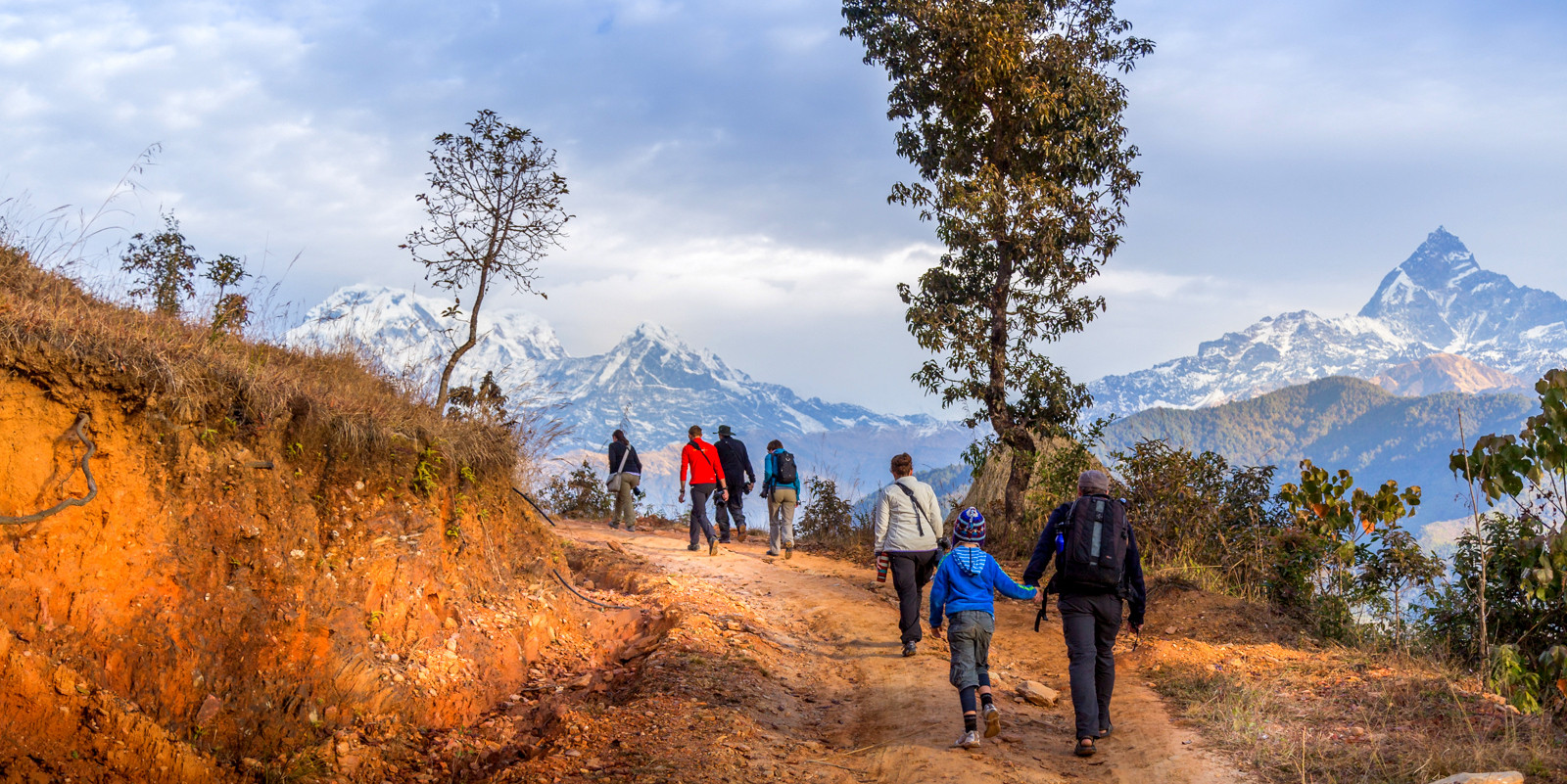Ghorepani Poon Hill Trek
The Ghorepani Poon Hill Trek is one of the most popular and rewarding short treks available in the Annapurna region of Nepal. Ideal for those who are looking for a relatively easy, family-friendly trekking experience, this trek offers spectacular mountain scenery and a deep cultural immersion without the challenges of high altitudes or long trekking days. Here are the key details and attractions of the Ghorepani Poon Hill Trek:

Key Details
-
Duration: Typically 4-5 days
-
Difficulty Level: Easy to moderate
-
Starting/Ending Point: Pokhara, which is easily accessible by road or air from Kathmandu
-
Maximum Altitude: 3,210 meters (10,532 feet) at Poon Hill
-
Best Season: Spring (March to May) and Autumn (September to November) are the best times to trek, offering clear skies and moderate temperatures.
Major Highlights
-
Panoramic Sunrise Views: The highlight of the trek is the early morning hike to Poon Hill to witness the breathtaking sunrise over the Himalayas. The viewpoint offers a panoramic view of the Annapurna and Dhaulagiri mountain ranges, including several peaks over 8,000 meters such as Annapurna South, Annapurna I, Dhaulagiri, and Machhapuchhre (Fishtail Mountain).
-
Ethnic Villages and Culture: The trek passes through various ethnic Magar and Gurung villages, where trekkers can experience the rich cultural heritage of these communities. The warm hospitality of the local people adds to the charm of the journey.
-
Rhododendron Forests: Particularly stunning during the spring months, the trek trails through dense forests of rhododendron, Nepal's national flower, which blooms vibrantly in shades of red, white, and pink.
-
Accessibility and Suitability: This trek is highly accessible from Pokhara and suitable for trekkers of all ages and fitness levels, including children and older adventurers. The paths are well-maintained, and the trek can be comfortably completed with daily walks of 4-6 hours.
-
Variety of Fauna and Flora: In addition to the cultural and mountainous vistas, the region is rich in biodiversity, offering trekkers the chance to see a variety of birds, butterflies, and plant species.
Accommodations: The trek features numerous teahouses and lodges along the route, providing comfortable accommodations and the opportunity to enjoy local food and hospitality.
The Ghorepani Poon Hill Trek is often combined with other trails in the Annapurna region for those seeking a longer adventure. However, even on its own, it remains a fulfilling trek that offers a complete Himalayan experience—spectacular natural beauty, engaging trails, and cultural richness—making it a perfect choice for families or those new to trekking in Nepal.
Langtang Valley Trek
The Langtang Valley Trek is a mesmerizing journey into one of the closest trekking regions to Kathmandu, yet it feels remarkably remote and peaceful compared to the more frequented trails of the Annapurna and Everest regions. This trek offers a beautiful blend of natural beauty and cultural richness, making it an excellent choice for those looking to experience the Himalayas without the crowds.
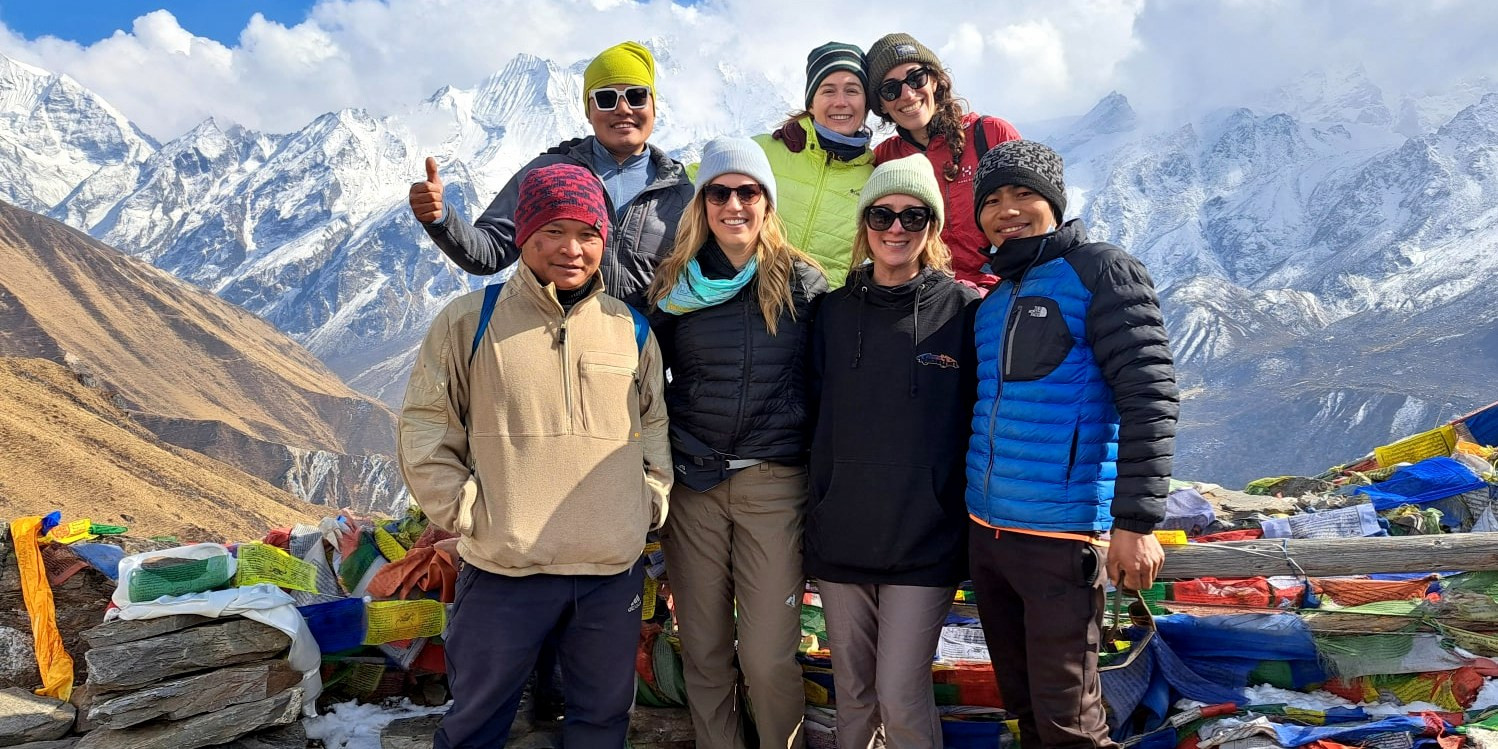
Key Details
-
Duration: Typically 7-9 days
-
Difficulty Level: Moderate
-
Starting/Ending Point: The trek starts and ends in Syabrubesi, which is about a 6-7 hour drive from Kathmandu.
-
Maximum Altitude: 3,870 meters (12,697 feet) at Kyanjin Gompa
-
Best Season: Spring (March to May) and Autumn (September to November) are ideal, with stable weather and clear skies.
Major Highlights
-
Scenic Views and Varied Landscapes: The trek offers dramatic views of Langtang Ri, Langtang Himal, Langsisa peak, and Ganjala peak. The trail ascends through varied landscapes, from lush forests and bamboo groves to wide alpine meadows.
-
Rich Tibetan Culture: Langtang Valley is heavily influenced by Tibetan culture due to its proximity to Tibet. Trekkers can explore ancient monasteries like Kyanjin Gompa and see many chortens and mani walls along the trail, reflecting the strong spiritual heritage of the region.
-
Wildlife: The region is part of Langtang National Park, which is home to diverse wildlife. If lucky, trekkers might spot the rare red panda, Himalayan tahr, or musk deer.
-
Cheese Factory: At Kyanjin Gompa, there is a small cheese factory that produces cheese from yak milk. Visitors can tour the facility and taste fresh Himalayan cheese.
-
Impact of 2015 Earthquake: Langtang Valley was one of the areas most affected by the 2015 earthquake. Trekking in this region helps support the local economy and contributes to recovery efforts, as many communities here rely heavily on trekking tourism.
Accommodations: The trek is well-supported by a network of teahouses that provide basic but comfortable lodging and traditional Nepalese meals, allowing trekkers to experience local hospitality.
Trekking Experience: The trail is less crowded than its more famous counterparts, offering a more intimate experience of the Himalayas. The trekking route is straightforward but does involve some steep climbs and descents, making it suitable for moderately fit individuals and those with some trekking experience.
The Langtang Valley Trek not only showcases the stunning natural beauty of Nepal but also offers an immersive cultural experience. It's an ideal trek for those who wish to enjoy a quieter but equally rewarding Himalayan adventure.
Annapurna Base Camp Short Trek
The Annapurna Base Camp Short Trek is a condensed version of the classic Annapurna Base Camp trek, designed for those who have limited time but still want to experience the majesty of the Annapurna region. This trek offers an incredible mix of beautiful mountain scenery, vibrant local culture, and accessible trekking routes, making it an excellent choice for a wide range of trekkers, including families and beginners.
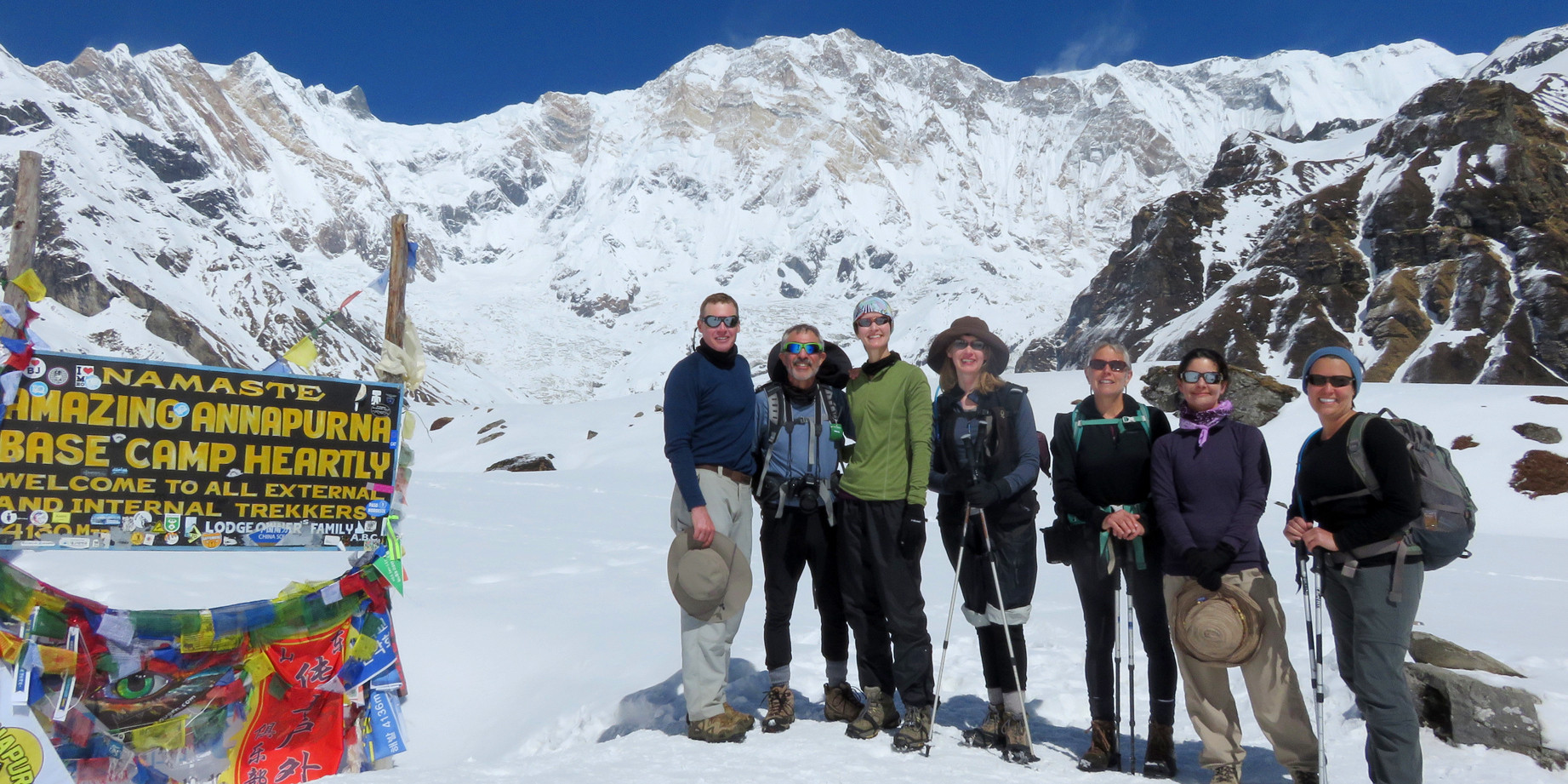
Key Details
-
Duration: 7-10 days, depending on the chosen route and pace
-
Difficulty Level: Moderate
-
Starting/Ending Point: The trek typically starts and ends in Pokhara, which is well-connected by road and air to Kathmandu.
-
Maximum Altitude: 4,130 meters (13,549 feet) at Annapurna Base Camp
-
Best Season: Spring (March to May) and Autumn (September to November) are the best seasons, with clear skies and mild weather.
Major Highlights
-
Spectacular Mountain Views: The trek provides stunning close-up views of several high peaks, including Annapurna I, Annapurna South, Machhapuchhre (Fishtail Mountain), and Hiunchuli.
-
Diverse Landscapes: The path takes you through a variety of ecosystems, from lush subtropical forests and terraced rice paddies to alpine environments and glacial zones.
-
Machhapuchhre Base Camp: Along the way to Annapurna Base Camp, trekkers also pass through Machhapuchhre Base Camp, which offers fantastic views of the sacred and untouched Fishtail Mountain.
-
Gurung Villages: The trail winds through several traditional Gurung villages, where trekkers can experience the local lifestyle and culture. These communities are known for their hospitality and rich history of Gurkha service.
-
Hot Springs: At Jhinu Danda, located a short detour from the main trekking path, you can relax in natural hot springs, a perfect way to soothe sore muscles after days of trekking.
The Annapurna Base Camp Short Trek is ideal for those looking for a trek that combines the thrill of adventure with the beauty of nature and the warmth of Nepalese culture in a shorter timeframe. It remains one of the most popular treks in Nepal, offering a fulfilling experience that captures the essence of the Himalayas.
Everest Panorama Trek
The Everest Panorama Trek, also known as the Everest View Trek, is a shorter alternative to the full Everest Base Camp trek that still offers stunning views of the world's highest peaks, including Mount Everest itself. This trek is perfect for those who have limited time or prefer a less strenuous journey but still want to experience the awe of standing amidst the giants of the Himalayas. It provides a wonderful introduction to Sherpa culture, beautiful mountain scenery, and the unique environment of the Khumbu region.
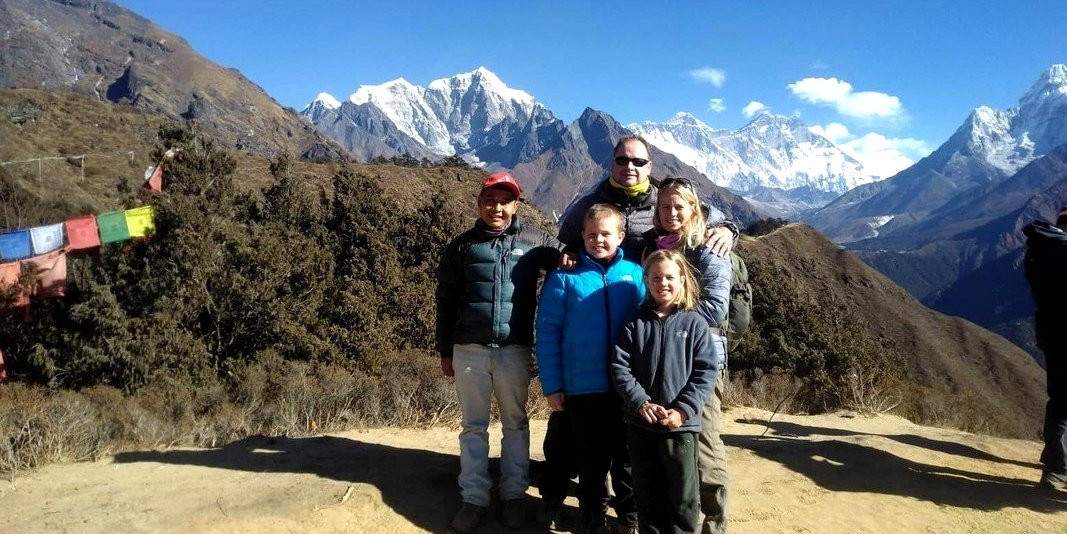
Key Details
-
Duration: 7-8 days
-
Difficulty Level: Moderate
-
Starting/Ending Point: The trek starts and ends with a flight to and from Lukla, which connects to Kathmandu.
-
Maximum Altitude: 3,860 meters (12,664 feet) at Tengboche Monastery
-
Best Season: Spring (March to May) and Autumn (September to November) are the best times to go, offering the clearest skies and most stable weather.
Major Highlights
-
Everest View Hotel: One of the trek’s first highlights, located near Namche Bazaar, where you can enjoy a stunning panoramic view of Everest and other high peaks over a cup of tea or coffee.
-
Namche Bazaar: Often called the gateway to Everest, this bustling Sherpa town offers modern conveniences mixed with traditional culture. It's a great place to acclimatize and explore local shops and monasteries.
-
Tengboche Monastery: This is the highest point of the trek and a spiritual center in the Khumbu region. Tengboche Monastery offers possibly the best panoramic views of Everest, Ama Dablam, and other Himalayan giants.
-
Sherpa Culture: The trek travels through several Sherpa villages, providing insights into the lives and traditions of the Everest region’s indigenous people.
-
Flora and Fauna: The trail passes through the Sagarmatha National Park, a UNESCO World Heritage Site, offering the opportunity to observe unique Himalayan flora and fauna.
Accommodations: The trek is serviced by a network of teahouses offering basic but comfortable lodging and traditional Nepalese food, allowing trekkers to travel light and enjoy the hospitality of the local Sherpa community.
Trekking Experience: The Everest Panorama Trek involves some steep climbs and descents, and high altitude can be a challenge, but overall, it is less demanding than the treks going further into the Everest region. It's well-suited for those with moderate fitness levels and does not require previous high-altitude trekking experience.
The Everest Panorama Trek is an excellent choice for anyone wanting to soak in the majestic presence of Everest without the extended trekking time required to reach Everest Base Camp. This trek combines natural beauty, cultural richness, and a taste of high mountain adventure in a compact journey that leaves lasting memories.
Royal Trek
The Royal Trek is one of the least demanding yet most scenic treks available in the Annapurna region of Nepal. Named after Prince Charles, who walked this route in the early 1980s shortly before his marriage to Princess Diana, this trek has been a choice for those who want to experience the beauty of the Himalayas without the physical challenges presented by higher altitude treks. It's especially suitable for beginners or those who have limited time but still wish to have a meaningful trekking experience in Nepal.
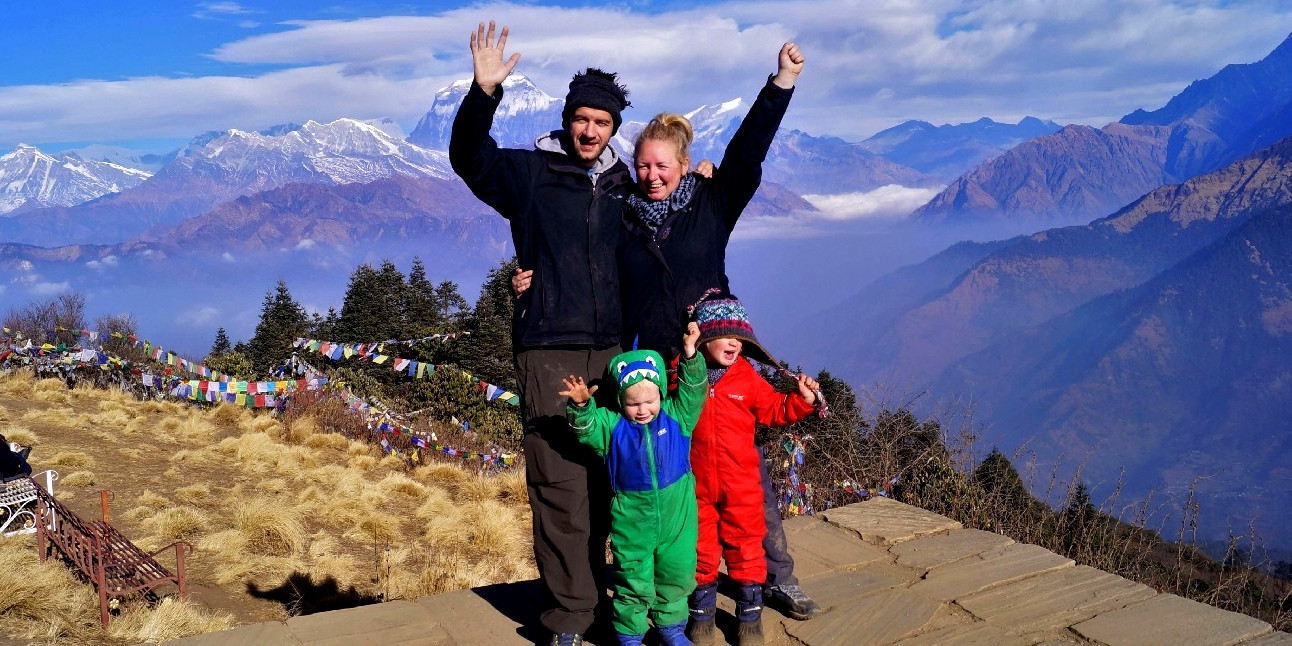
Key Details
-
Duration: 3-4 days
-
Difficulty Level: Easy
-
Starting/Ending Point: The trek typically starts near Pokhara and ends at the scenic Begnas Lake.
-
Maximum Altitude: About 1,730 meters (5,675 feet) at Syaklung
-
Best Season: Spring (March to May) and Autumn (September to November) are ideal, offering clear weather and excellent views.
Major Highlights
-
Scenic Mountain Views: Despite being a low-altitude trek, the Royal Trek offers beautiful views of the Annapurna range, including Machhapuchhre (Fishtail Mountain) and Langtang Himal.
-
Cultural Experience: The trail goes through various Brahmin and Chhetri villages, providing a glimpse into the rural, yet culturally rich lives of the ethnic communities of the region.
-
Less Crowded Paths: Unlike the more popular Annapurna treks, the Royal Trek is not heavily trafficked, offering a more peaceful and personal connection with nature and local communities.
-
Diverse Landscapes: The trek features a mix of landscapes, including paddy fields, lush forests, and hilltop ridges, all with relatively easy trails that are well suited for families and less experienced trekkers.
-
Access to Remote Areas: This trek provides a unique opportunity to explore the less-visited areas around Pokhara, giving a more secluded and authentic experience compared to the commercial trekking routes.
Accommodations: Since the trek is short and goes through less remote areas, it offers options for comfortable accommodations and good hospitality, providing a nice balance of adventure and comfort.
Trekking Experience: The Royal Trek is considered an introductory trek, perfect for those new to trekking or who are looking for a short outdoor adventure. The altitude gain is gradual and manageable, making it suitable for all ages and fitness levels.
The Royal Trek is an excellent choice for anyone seeking a brief but beautiful trekking experience in Nepal. It offers a perfect introduction to what trekking in the Himalayas can offer — stunning natural beauty, cultural insights, and a gentle adventure. This trek allows travelers to enjoy the Himalayan landscape and Nepalese hospitality without the strain of higher altitudes or longer trek durations.
Tips for Best Family Treks in Nepal
Planning a family trek in Nepal can be an exhilarating experience, offering unforgettable memories and bonding opportunities. However, ensuring a smooth and enjoyable journey requires some careful preparation, especially when trekking with children. Here are some tips to help you make the most out of your family trek in Nepal:
Choose the Right Trek
-
Match the Trek to Your Family’s Fitness Level: Select a trek that suits the physical abilities of all family members. Consider treks that are labeled as easy or moderate and have shorter walking days.
-
Consider Altitude and Acclimatization: Be mindful of the altitude and ensure the trek allows for proper acclimatization, especially important when trekking with kids.
Plan at the Best Time of Year
- Opt for Ideal Weather Conditions: The best times to trek in Nepal are during the spring (March to May) and autumn (September to November). These months offer stable weather, clear skies, and moderate temperatures, making the trekking experience more comfortable for children.
Pack Appropriately
-
Essential Gear and Clothing: Ensure you have appropriate trekking gear, including comfortable walking shoes, warm clothing, rain gear, and hats for sun protection. For kids, pack extra clothes as they are more prone to getting dirty or wet.
-
Snacks and Water: Bring along plenty of snacks that your children enjoy. Hydration is crucial at high altitudes, so carry sufficient water and consider packing hydration salts or similar supplements.
Hire a Knowledgeable Guide
-
Local Expertise: A local guide can enhance the trekking experience by providing insights into the local culture, flora, and fauna, making the trek educational for children as well.
-
Safety First: Experienced guides are also crucial for navigating the trails safely and responding to any emergencies, especially important when trekking with family.
Ensure Medical Precautions
-
Carry a First-Aid Kit: Include basic first-aid supplies and any personal medications. It’s also a good idea to know the symptoms of altitude sickness and how to treat it.
-
Travel Insurance: Make sure your travel insurance covers high altitude trekking and medical evacuation, which provides peace of mind when trekking with children.
Keep a Flexible Itinerary
-
Plan for Extra Days: Children may need more time to acclimatize or may not be able to maintain the pace an adult can. Having a few buffer days in your itinerary can reduce stress and keep the experience enjoyable.
-
Daily Trekking Time: Keep the daily trekking hours reasonable, with plenty of breaks for rest, snacks, and exploration.
Engage and Involve Your Kids
-
Educational Opportunities: Teach your kids about the culture, geography, and biodiversity of Nepal during the trek. This not only keeps them engaged but also enhances their learning experience.
-
Involve Them in Planning: Let your children have a say in the planning process, such as choosing routes or daily activities. This can make them feel more involved and excited about the adventure.
Stay Positive and Patient
-
Maintain a Cheerful Attitude: Your enthusiasm can greatly influence how your children perceive challenges during the trek. Keeping a positive outlook will help them overcome difficulties more easily.
-
Be Patient: Understand that children may not always be enthusiastic about walking long distances. Encourage them gently and celebrate small accomplishments along the way.
By following these tips, your family trek in Nepal can become a rewarding adventure that balances the thrill of the Himalayas with safety and comfort, ensuring everyone from the youngest to the oldest has a great time.
Ideal Time for Best Family Treks in Nepal
Exploring the best time to undertake family treks in Nepal involves considering the unique characteristics of each season, as the weather can significantly impact the trekking experience. Here’s a breakdown of what each season offers for trekkers in Nepal:
Spring (March to May)
-
Weather: The weather is generally mild, making it ideal for trekking. Days are warm, and the skies are usually clear in the morning, although there can be some haze in the lower regions.
-
Scenery: Spring is notable for its vibrant flora; rhododendrons, in particular, bloom extensively along the trails, creating spectacular landscapes.
-
Advantages: Besides the beautiful blooms, spring is also a good time for wildlife spotting as animals emerge from winter hibernation.
Summer/Monsoon (June to August)
-
Weather: Summer coincides with the monsoon season, bringing heavy rainfall, especially in the afternoons. Trails can be slippery and leeches are common in the lower regions.
-
Scenery: The rains bring lush greenery, and the landscape is vibrant, but mountain views are often obscured by clouds.
-
Advantages: This is the least crowded season, so you'll have the trails more to yourself. The rains also mean fewer dust particles in the air, clearing up the skies post-monsoon.
Autumn (September to November)
-
Weather: Autumn is considered the best trekking season due to its stable and clear weather. Temperatures are comfortably cool and the skies are usually crystal clear.
-
Scenery: This season offers some of the best mountain visibility, with dry air and minimal cloud cover.
-
Advantages: Autumn is also culturally vibrant, coinciding with major Nepali festivals like Dashain and Tihar, which can provide unique cultural insights.
Winter (December to February)
-
Weather: Winter in Nepal is cold, especially at higher altitudes, with temperatures frequently dropping below freezing. However, lower altitude treks are still quite enjoyable.
-
Scenery: The skies are clear, offering excellent mountain views, and the trails are less crowded.
-
Advantages: Trekking in winter can be appealing due to the peacefulness of the trails and the stark beauty of the snow-capped mountains, but it's essential to be prepared for colder conditions.
Each season in Nepal has its charm and challenges. Choosing the right one will depend on your family's preferences for climate, scenery, and the kind of experience you want to have while trekking in the beautiful landscapes of Nepal.
Against some of the world's most spectacular scenery, Nepal provides different family-friendly hikes that blend cultural immersion with adventure. Every hike offers a special possibility to make long-lasting memories, whether one chooses the floral trails of spring in Annapurna or the open autumn views of Langtang Valley. Not only about the walk, family trips in Nepal also provide a chance for bonding, cultural discovery, and appreciation of the surroundings. Selecting the proper trek for your family's requirements and getting ready will guarantee you a wonderful and unforgettable trip in the grand Himalayas.
FAQs for Best Family Treks in Nepal
Q: What are the best family-friendly treks in Nepal?
A: Ideal treks for families include the Ghorepani Poon Hill Trek, perfect for beginners; the Langtang Valley Trek for a blend of moderate hiking and cultural experiences; the Annapurna Base Camp Short Trek for high-altitude scenery; the Everest Panorama Trek for excellent views without reaching Everest Base Camp; and the Royal Trek, which is easy and filled with historical significance, suitable for young children.
Q: When is the best time to go on a family trek in Nepal?
A: The most favorable trekking conditions are during the spring (March to May) and autumn (September to November), when the weather is stable and the views are typically clear.
Q: How should we prepare for altitude sickness?
A: To minimize the risk of altitude sickness, ascend slowly to aid acclimatization, stay hydrated, avoid alcohol, recognize the symptoms early, and consider discussing preventive medications with a healthcare provider before your trip.
Q: What should we pack?
A: Essential items include clothing for varying weather conditions, durable trekking boots, sun protection (sunscreen, hats, sunglasses), a comprehensive first-aid kit, and snacks and entertainment for children.
Q: Are guides necessary for family treks in Nepal?
A: While not mandatory, hiring a guide is strongly recommended. Guides enhance safety, provide cultural insights, assist with navigation, and help manage logistics.
Q: What are the accommodations like on family treks?
A: Family-friendly treks typically feature teahouse accommodations, which offer basic but comfortable lodging and meals.
Q: How do we keep children engaged during the trek?
A: Engage children by involving them in the planning process, planning frequent breaks, maintaining short trekking distances, and bringing along games and books for entertainment.
Q: What is the average cost of a family trek in Nepal?
A: Costs typically range from $30-50 per person per day, which usually includes accommodations, meals, and trekking fees. This can vary depending on the length of the trek and whether you hire guides and porters.
Q: How can we respect local cultures during our trek?
A: Show respect by dressing modestly, asking for permission before taking photos, learning a few basic Nepali phrases, and adhering to your guide’s advice on local customs.
Q: Is travel insurance necessary?
A: Yes, travel insurance is essential and should cover high-altitude trekking, including medical evacuation and emergency services.
For the Nepal tour, please click here.
If you are looking for different kinds of Nepal Tours or Trekking Packages, feel free to contact us.
